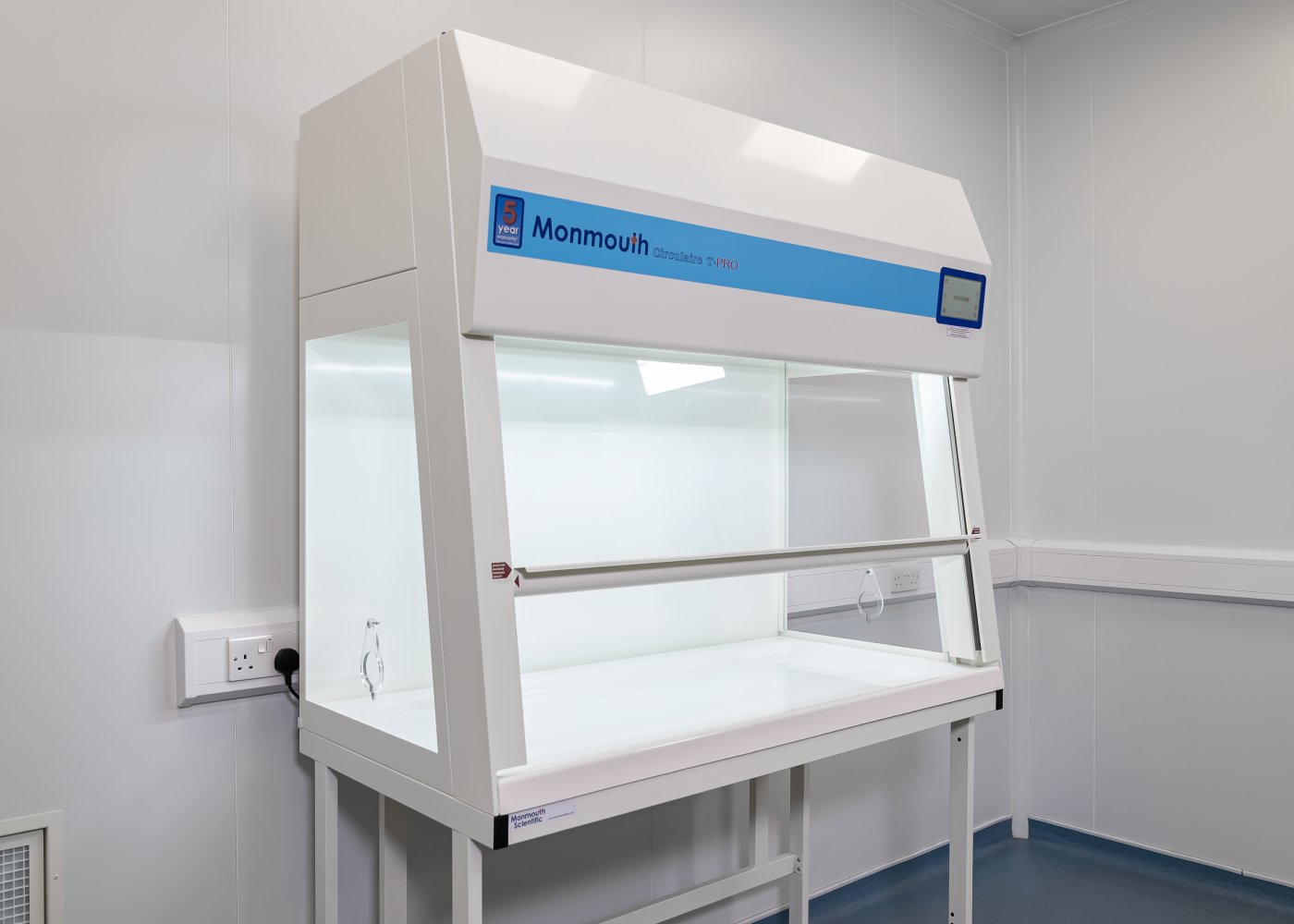
Frequently Asked Questions on Recirculating Fume Cupboards.
When it comes to safe and efficient containment solutions, Monmouth Scientific’s Recirculating Fume Cupboards lead the industry. Whether you’re a laboratory technician, researcher, or facilities manager, understanding how these systems work can help you make an informed purchasing decision.
In this FAQ, we’ll answer the most common questions about our recirculating fume cupboards, their features, and why they’re the right choice for your workspace.
What is a Recirculating Fume Cupboard?
A Recirculating Fume Cupboard, also known as a ductless fume cupboard, is a type of laboratory equipment designed to capture hazardous fumes, vapours, and particulates. Instead of venting these contaminants outside, the cupboard uses advanced filtration technology to clean the air and return it to the room, making it an eco-friendly and flexible solution.
What Are the Key Benefits of Recirculating Fume Cupboards?
- Eco-Friendly Design: No need for ducting reduces energy loss and environmental impact.
- Cost-Effective Installation: No external ductwork means lower setup costs.
- Flexibility: Easily moved and reinstalled for changing laboratory layouts.
- Safety: High-performance filtration systems protect users and the environment.
- Compliance: Meets stringent safety and environmental regulations.
What Applications Are Recirculating Fume Cupboards Suitable For?
Our Recirculating Fume Cupboards are ideal for:
- Chemistry labs handling volatile compounds.
- Pharmaceutical research requiring controlled environments.
- Educational institutions for safe learning demonstrations.
- Industrial processes involving hazardous materials.
How Do Recirculating Fume Cupboards Work?
These cupboards use multi-stage filtration systems to purify the air:
- Pre-Filters: Capture large particles and dust.
- Activated Carbon Filters: Adsorb chemical vapours and gases.
- HEPA Filters (Optional): Remove particulates for ultra-clean air. The purified air is then safely recirculated back into the workspace.
What Types of Filters Are Available?
Monmouth Scientific offers a range of filters to suit diverse applications:
- General Purpose Carbon Filters: Suitable for most common laboratory chemicals.
- Specialised Carbon Filters: For specific chemicals like ammonia or formaldehyde.
- HEPA Filters: For particulate filtration where required.
How Often Should Filters Be Replaced?
Filter replacement intervals depend on usage and the type of contaminants handled. On average:
- Carbon filters: Every 6-12 months
- HEPA filters: Every 12-18 months
Our team provides detailed maintenance guidance to ensure optimal performance.
What Maintenance Do Recirculating Fume Cupboards Require?
To maintain safety and efficiency:
- Regularly inspect pre-filters and main filters.
- Perform airflow and filter integrity tests as per regulatory guidelines.
- Keep the cupboard’s surfaces clean and free from obstructions. Monmouth Scientific offers service contracts to handle these tasks for you.
Are Recirculating Fume Cupboards Safe?
Yes. All our recirculating fume cupboards are designed to comply with BS EN 14175-2:2020 standards, ensuring reliable performance and user safety.
- Compliance with international safety standards such as EN 14175.
How Do Recirculating Fume Cupboards Compare to Ducted Models?
| Feature | Recirculating Fume Cupboards | Ducted Fume Cupboards |
| Installation Cost | Lower | Higher |
| Environmental Impact | Minimal | Higher |
| Flexibility | High | Low |
| Operating Cost | Medium | Medium-High |
| Filtration | Requires Regular Replacement | No Filters Required |
Recirculating fume cupboards are a great choice for labs needing flexibility and cost-efficiency, while ducted models are better suited for high-volume contaminant removal.

